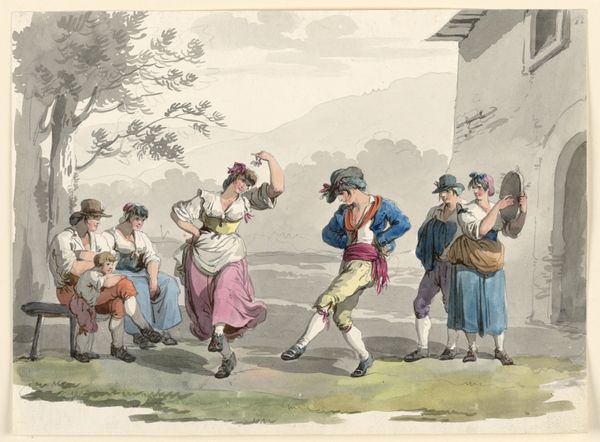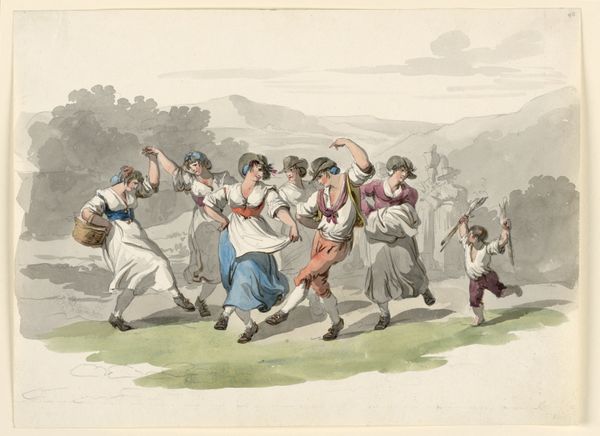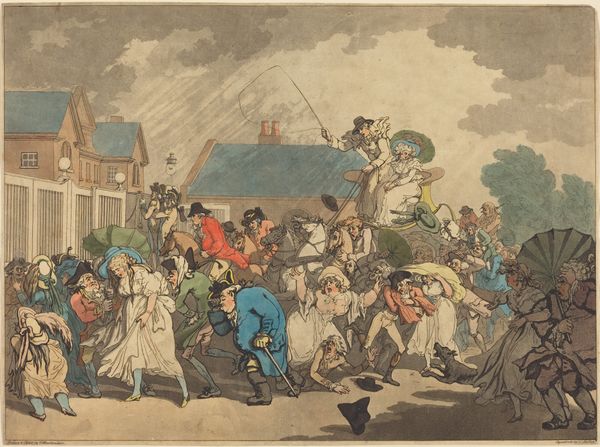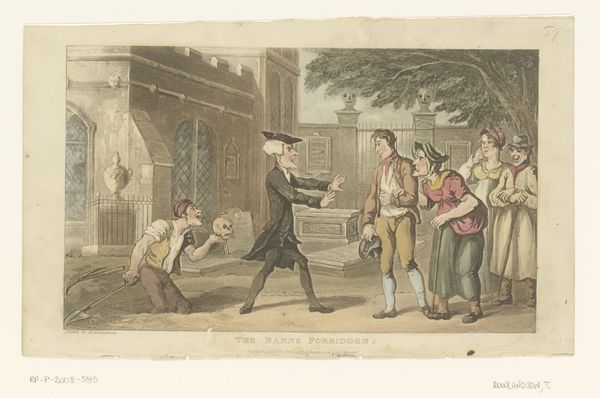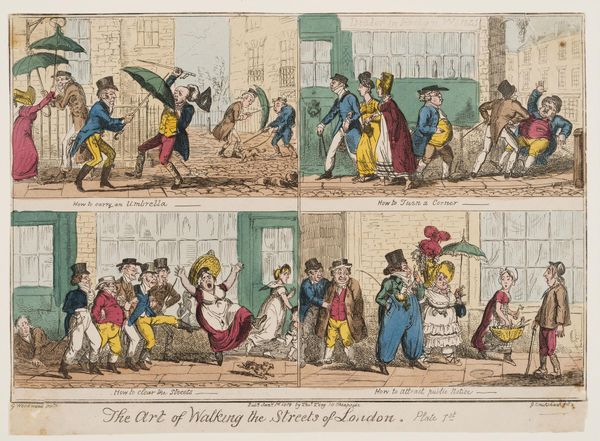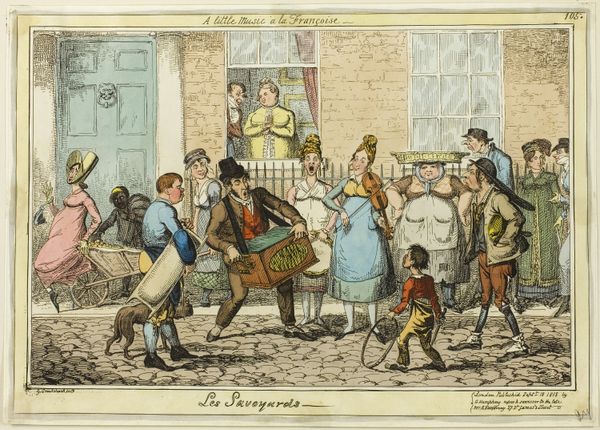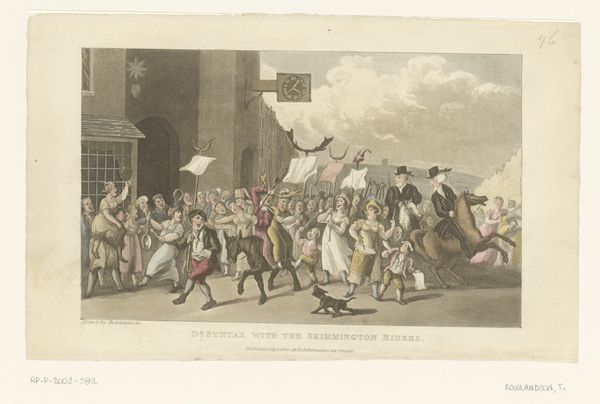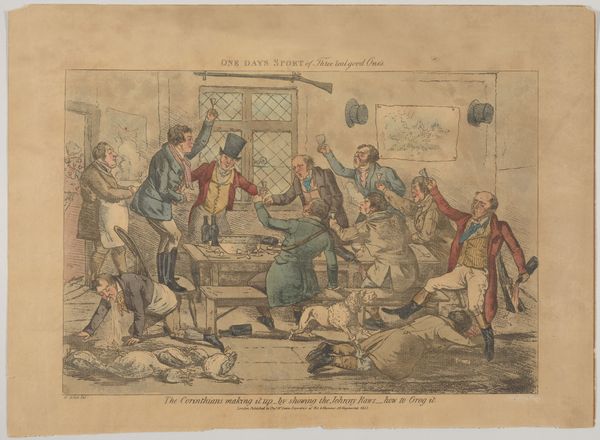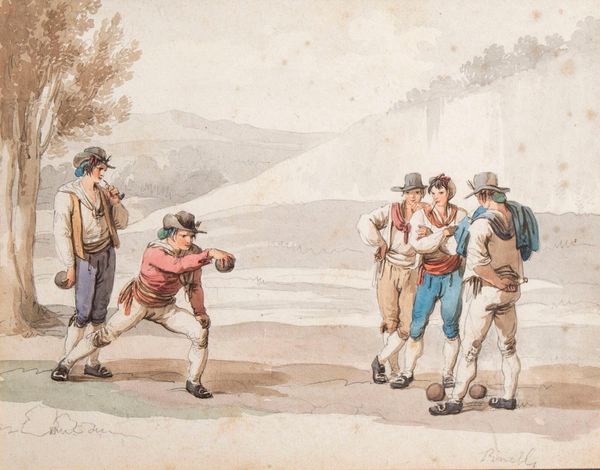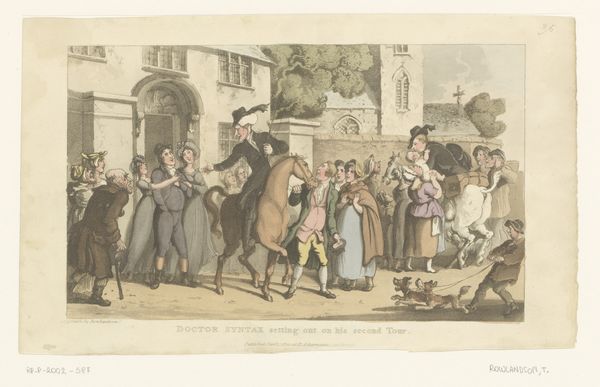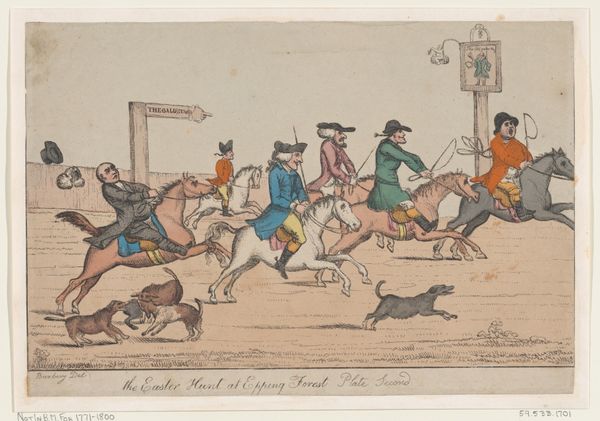
drawing, watercolor, ink
#
drawing
#
narrative-art
#
landscape
#
figuration
#
watercolor
#
ink
#
romanticism
#
watercolour illustration
#
genre-painting
#
history-painting
#
italian-renaissance
#
italy
Copyright: Public domain
Editor: This drawing is titled "A Domestic Dispute in Tivoli," made in 1808 by Bartolomeo Pinelli, using ink and watercolor. The scene depicts a tense standoff, maybe a fight brewing? There's a figure brandishing a weapon while another woman seems terrified. How do you interpret this work? Curator: Let’s look at the means of production here. Pinelli's use of ink and watercolor is quite telling for the period. Think about what drawing allowed him to do - rapidly reproduce and disseminate images, playing into a burgeoning market for picturesque scenes of Italian life, especially for tourists consuming a romantic vision. It speaks to a market need, doesn't it? The 'domestic dispute' isn't just a singular event; it becomes a commodity. How does that affect its reading for you? Editor: That's interesting, so the drama is almost being sold, a packaged version of Italian life. So, you're saying it’s about the commodification of these… moments? Rather than the moment itself? Curator: Precisely. And what kind of image is being consumed? A rural, perhaps ‘uncivilized’ vision of Italy is implied, something separate from the more refined urban centres which were the other site of European fascination. What's being made, bought and sold? Not necessarily the high ideals, but a sort of primal passion on display. Pinelli isn't just making art, he’s part of a process, feeding a particular social narrative. And crucially, what is left out? Editor: It feels like a critical way to consider the drawing. Thanks. Curator: Of course! This reframing has highlighted how production, social context and commerce shapes even seemingly simple images.
Comments
No comments
Be the first to comment and join the conversation on the ultimate creative platform.
